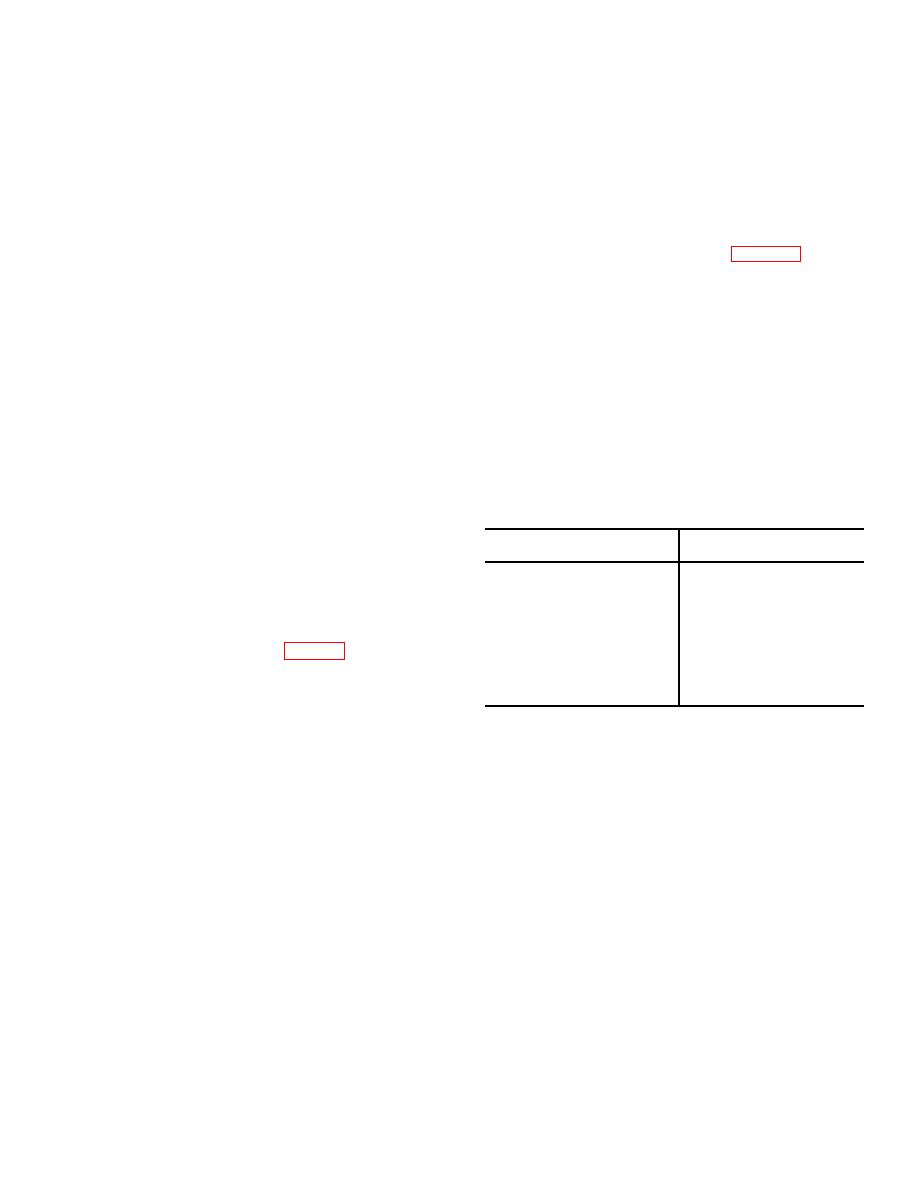 |
|||
|
|
|||
|
|
|||
| ||||||||||
|
|
 TM 10-3930-222-20
(2) Clean dirt, insects, and trash from the exterior of
e. Antifreeze Protection.
the core, using compressed air or a stream of
Note
water applied carefully from the rear side of the
Antifreeze solutions will be drained
core. Do not use steam.
from the engine cooling system at
(3) If the core fins are bent, use a piece of wood or
the end of each cold season and the
a blunt instrument to straighten them. Be
solutions will be discarded.
careful not to puncture the tubes.
(4) Inspect radiator mounts and tighten them as
(1) In cold weather, add antifreeze to the radiator to
necessary.
protect the cooling system. Table III shows the
(5) Be sure radiator hose clamps are tight.
quantity of approved antifreeze compound
(6) Inspect radiator and hoses for leaks.
required to protect the 14 quart cooling system.
b. Draining and Refilling.
(2) After filling the radiator with necessary
(1) To drain cooling system, remove radiator cap
antifreeze compound, allow the engine to run
and open drain valve. If the cooling system is
until normal operating temperature is reached.
not to be refilled immediately, attach a notice to
Check strength of antifreeze with a hydrometer.
the steering wheel to warn personnel that the
(3) Before adding water to a radiator containing the
cooling system has been drained.
antifreeze solution, allow engine to run until the
(2) To refill the cooling system, close drain valve
solution is well mixed. Test the solution with a
and add water, corrosion inhibitor (f below), and
hydrometer and add water and/or antifreeze
antifreeze (e below) as required. Operate the
compound as necessary.
engine, inspect the coolant level, and add
coolant as necessary. Install the radiator cap.
Table III. Antifreeze Requirements
c. Cleaning and Flushing.
Follow instructions
(14-quart cooling system)
provided with cleaning compound.
d. Pressure Flushing. When overheated condition
Lowest safe temperature
Ethylene glycol
(degrees Fahrenheit)
(quarts)
is not corrected by normal cleaning and flushing,
27
1
proceed as follows:
22
2
(1) Drain the cooling system.
15
3
(2) Remove the upper radiator hose from top
6
4
radiator inlet.
-5
5
(3) Remove the thermostat (par. 39) and install
-18
6
44
7
thermostat housing.
-54
8
(4) Remove the lower radiator hose from bottom
Lower than -55*
radiator outlet and install a lead-away hose.
*Use arctic-grade antifreeze. undiluted (FSN 6865174-1806).
(5) Install the pressure gun (one using air pressure
to force water) to upper radiator hose.
f. Corrosion Inhibitor. To prevent rust and scale,
(6) Force the water through block until water runs
and to extend the life of cooling system components,
clean.
add corrosion inhibitor compound (FSN 6850-281-1989)
(7) Remove the hose and gun, and install them on
to the cooling system in the following amounts:
radiator outlet at bottom of radiator.
(1) When water is used as the coolant, add 8
(8) Install a lead-away hose to radiator inlet.
ounces of corrosion inhibitor to the 14 quarts of
water.
(9) With the radiator cap installed, force water
through the radiator until the water runs clean.
(10) Close the drain valve, install the thermostat and
hoses, and fill the radiator with proper coolant.
73
|
|
Privacy Statement - Press Release - Copyright Information. - Contact Us |